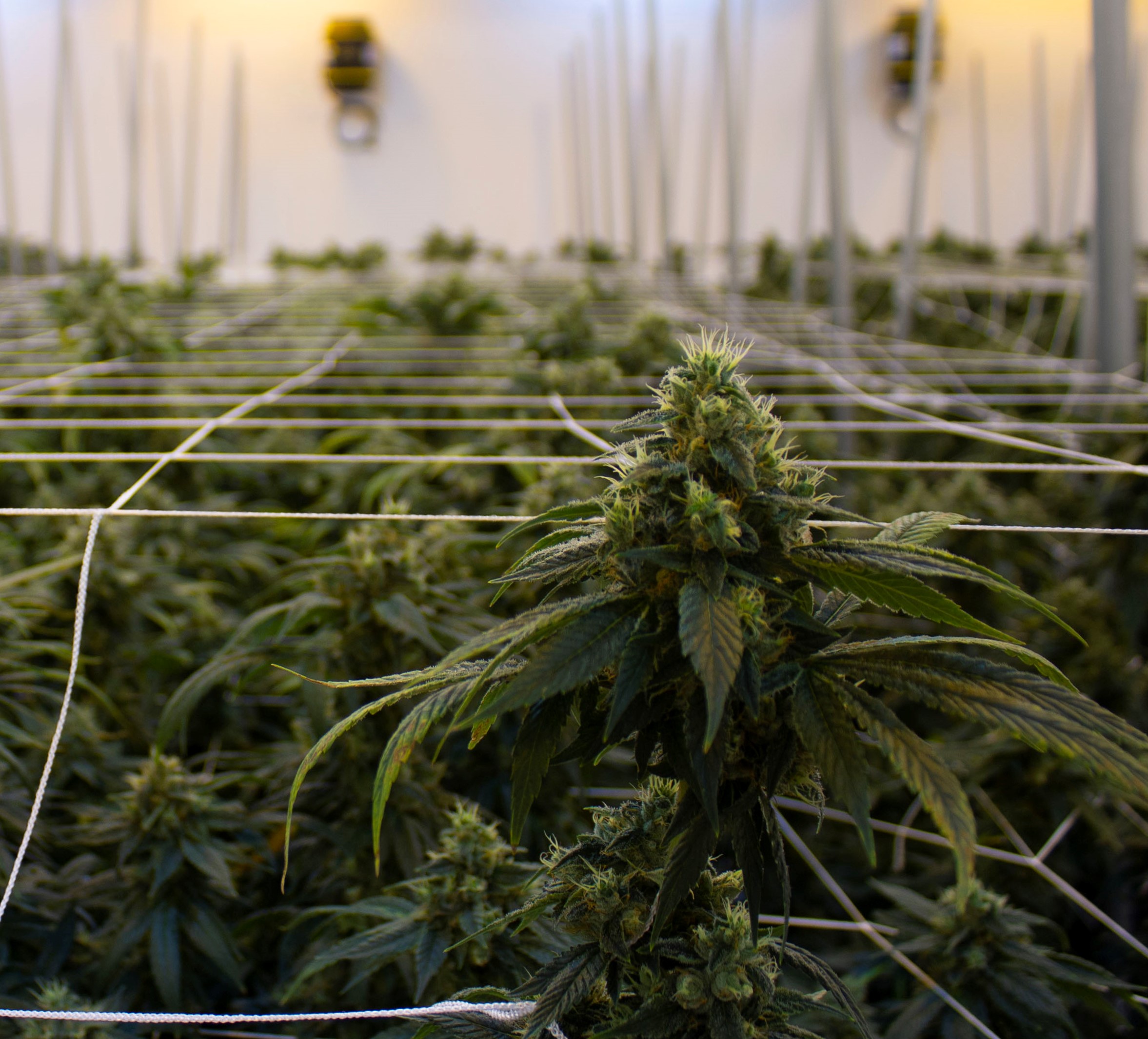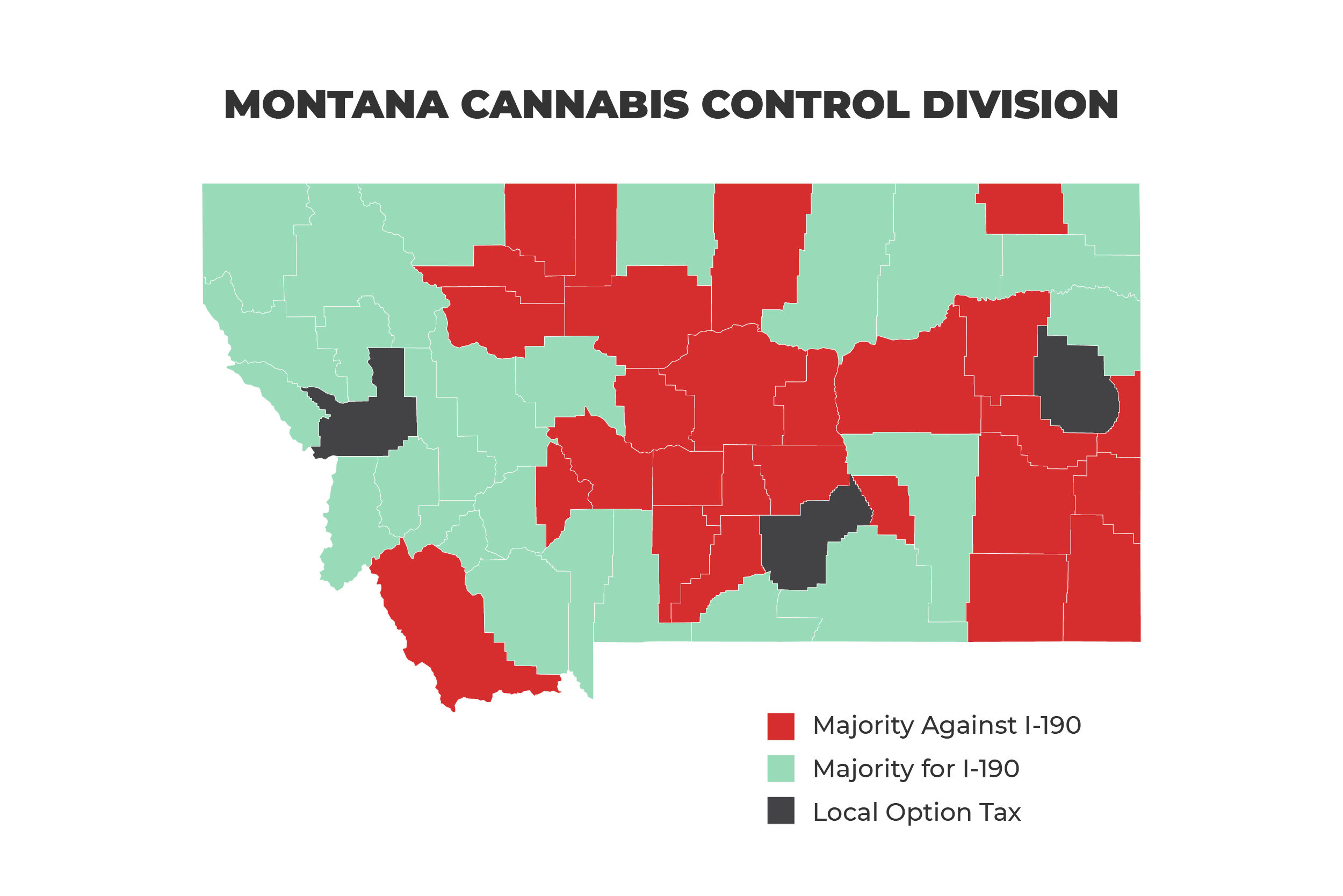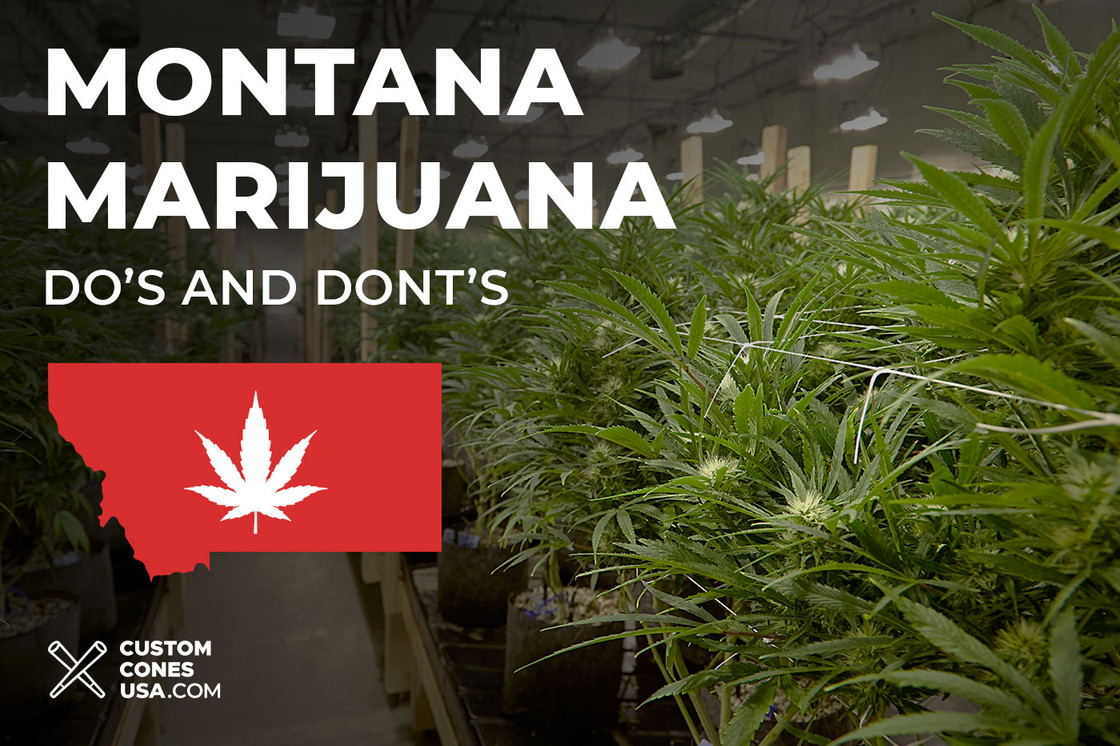Montana Cannabis Laws and Regulations
Posted by Custom Cones USA on Jan 13th 2022
As the 12th state to legalize the sale of recreational cannabis, Montana opened dispensary doors and began selling recreational cannabis on January 1st, 2022.
Let’s dig in a little deeper and find out exactly what Montana’s new cannabis laws look like, and how to legally cultivate, sell, purchase, and consume cannabis in Big Sky Country.

Cultivation, Distribution, and Sales

Who Can Sell Cannabis in Montana?
At the moment, only dispensaries that had a medical marijuana business license (or a pending license) on or before November 3, 2020 are allowed to sell recreational cannabis. This will remain for 18 months; after July 1, 2023, new businesses will be allowed to apply for permits.
What Conditions Must Be Met to Obtain a Montana Marijuana License?
The following applies to all businesses applying for a cannabis license, regardless of the type of license.
- All applications must be submitted through the Department of Revenue’s TransAction Portal (TAP).
- Businesses may apply for and obtain any combination of licenses.
- Licenses are granted for one-year periods and must be renewed annually.
- Every proposed location must undergo its own approval process. Each location must be applied for, inspected, and approved before starting operation.
- Each business type receives only one license but can have multiple sites associated with it.
- All applications require a 20% processing fee. This processing fee is non-refundable regardless of the outcome of the application. Before approval, the other 80% of the fees must be submitted.
- All employees must have a valid Worker Permit prior to starting work.
- Documentation of Montana residency, date of birth, and property ownership or property owner permission.
- Consent to fingerprint.
- Business organization chart.
- Controlling beneficial owners.
- Source of funding verification.
- Building and fire inspection report.
- City and county approval.
What Types of Cannabis Licenses Are Available in Montana?
Montana will continue the Montana Medical Marijuana Program, and the Department of Revenue will issue separate licenses for cannabis cultivators, manufacturers, dispensaries, transporters, workers, and testing laboratories. The DoR will offer 13 different cultivation or “canopy” licenses for growers of different sizes.
Can a Cannabis Grower Also Have a Permit for a Cannabis Retail Space?
Cultivators are permitted to sell the cannabis they cultivate to other businesses or at their own licensed dispensary. This means that growers can also run their own dispensary to sell their products. Dispensaries are permitted to sell cannabis products cultivated by other businesses, but products from other businesses may only account for 50% of total annual sales. In short, to own a dispensary you must also cultivate cannabis.
Are There Recreational Adult-Use Cannabis Licenses Available for Tribes?
Yes. The Department of Revenue may issue a total of eight combined-use licenses to tribes – one to each of the eight federally-recognized Native American tribes in Montana. Those licenses may operate within 150 air miles of the exterior boundaries of the reservation, if all other licensing conditions are met and they are located in a county that permits the sale of recreational cannabis.
Can Montana Marijuana Licenses be Transferred?
Unlike alcohol, which has licenses that are able to be sold or transferred to buyers approved by the Department of Revenue, marijuana licenses may not be transferred.
Are There Limits on THC Content in Cannabis in Montana?
Yes. Edibles may contain up to 10mg of THC per serving, with up to 100mg of THC per package. THC in cannabis flower may not exceed 35%. Topical products may not contain more than 6% THC, and no more than 800mg of THC per package. Theses limits do not apply to medical marijuana products to be sold to medical marijuana cardholders.
Can Medical Marijuana and Recreational Cannabis be Available at the Same Business?
Yes, a licensed medical marijuana dispensary can also sell recreational products in a single shared location, and a single entity may be licensed for both medical and recreational products.
Can the Price of an Aged Cannabis Product be Reduced?
Yes. If you change your price and that price is offered to all customers, that becomes the new established retail price. The established retail price, and any other changes made to that price, should be documented in your records.
How Do I Calculate the Tax on Discounted Products?
The tax will be applied on the established retail price of the product. Discounts made for an individual or group do not change the established retail price, and tax must be applied to the established retail price.
Where Can Dispensaries be Located?
In “green counties,” dispensaries cannot be located within 500 feet of any place of worship, school, or post-secondary school. In “red counties,” recreational cannabis dispensaries cannot exist.
What are the Packaging Requirements for Cannabis in Montana?
All usable cannabis packaged in containers must have labels securely affixed to the outside, with label information including the following:
- Licensee’s business name and registration number.
- Date of harvest/manufacture.
- Name of the strain or item.
- Net weight.
- Concentration of THC, THCA, CBD, and CDA by weight or volume.
- Unique identification number.
- Consumer warning labels: Keep Out of Reach of Children; This product is not approved by the US FDA to treat, cure, or prevent any disease; This product has been tested and meets the quality assurance requirements of the State of Montana.
- Topical and non-edible products not intended to be administered orally must include DO NOT EAT in bold capital letters, as well as a list of ingredients in descending order.
- Edible cannabis products and tinctures must include BE CAUTIOUS in bold capital letters, followed by “This product can take up to two hours or more to take effect,” and a list of potential food allergens.
- Cannabis concentrates and extracts must include DO NOT EAT in bold capital letters, the extraction method and solvent, and must be placed on the container and on any packaging that is used to display the products. The font may be no smaller than 8-point Times New Roman, Helvetica, or Arial font, in English, and be unobstructed and conspicuous.
- Items are permitted multiple labels if necessary.
- Licensees may use a peel-back or accordian label with the required information as long as it can be easily identified.
- Labels may not contain any untruthful or misleading statements, be attractive to minors by using cartoons, designs/brands/names that resemble non-cannabis products that is marketed to minors, or symbols/celebrities commonly associated with or marketed by minors.
Can a Cannabis Seller also Sell Nicotine/Vape Products?
Sellers must have an Alternative Nicotine or Vapor Retail Products license to sell nicotine and vape products such as e-cigarettes, vapor devices or mods, accessories, or e-juice. The license has a $20 annual fee. Please note that sellers need an alternative nicotine license even if they have a tobacco retailer license.
Purchasing and Consuming
 Who Can Buy Cannabis in Montana?
Who Can Buy Cannabis in Montana?
Any person over the age of 21 with a legal ID can purchase cannabis in Montana, including people from other states and countries. Just make sure to bring your ID with you to the dispensary!
Where Can I Buy Cannabis in Montana?
Not every county in Montana voted in favor of Montana Initiative 190. Only counties that voted in favor of cannabis legalization are authorized for legal recreational cannabis sales, and have been appropriately dubbed “green counties.” “Red counties” are able to re-vote and make the switch to a “green county” if they so choose.
Looking at the map below, you can see that there are more “green counties” are in the western side of the state than in the eastern side of the state.

In “green counties,” dispensaries cannot operate outside of the time between 9am and 8pm. Dispensaries are not allowed to open before 9am, or to close after 8pm. So if you try to purchase weed after 8pm or before 9am, you’ll be SOL!
Is Cannabis in Montana Taxed?
Yes, there is a 20% retail sales tax on cannabis products. Certain localities may opt to impose an additional tax of up to 3%.
What Will Montana Cannabis Tax Money Pay For?
After reserving the funds necessary for the continued implementation and regulation of the adult-use recreational cannabis market, tax revenue generated from cannabis sales will be distributed in the following order:
- Up to $6 million into the HEART Fund to support addiction and recovery programs.
- 20% to the Department of Fish, Wildlife, and Parks for conservation efforts.
- $200,000 or 3% (whichever is less) to veterans’ services.
- $450,000 to law enforcement agencies.
- Any remaining money will be deposited into the state’s general fund.
How Can I Buy Cannabis in Montana?
All dispensaries are currently cash only. This is common across most legal states, due to the federal banking restrictions on the cannabis industry.
What Type of Cannabis Can I Buy in Montana?
Cannabis flower, pre-rolls, edibles, tinctures, vape cartridges, concentrates, and topicals. Flower products cannot contain over 35% THC content – which shouldn’t be a huge issue, as flower on average contains 15-25% THC. This THC limit does not apply to medical marijuana products. Edibles are not to contain more than 100mg of THC per package with no more than 10mg of THC per serving, but this also does not apply to medical marijuana products.
Cannabis products for sale must be produced in Montana, and are heavily tested for bacteria, mold, and heavy metals. Rigorous testing is also done to verify potency and determine which compounds the material contains. The two biggest testing facilities are Fidelity Diagnostics and Stillwater Laboratories.
Consumers may purchase up to one ounce of cannabis per transaction, 800mg of edibles, or 8 grams of concentrate.
Each purchase must be placed into a child-resistant “exit bag” to leave the dispensary.
Where Can I Consume Cannabis in Montana?
Even though it’s legal to consume, it is still illegal to consume in public. Public consumption of cannabis products is punishable by a civil fine up to $50.
Consuming cannabis on federal lands within Montana, such as national parks like Glacier and Yellowstone, can result in a misdemeanor. Because those lands are federal lands, the federal prohibition on cannabis still stands.
You may not take Montana cannabis across state lines into another state, even if it is a legal state. Similarly, you may not bring cannabis from out of state into Montana.
How Much Cannabis Can I Possess in Montana?
People may possess up to one ounce of cannabis at a time outside of their home. Inside their home, with the cannabis out of plain sight, there is currently no limit mentioned.
If you are caught possessing between 1-2 ounces of cannabis outside of your home, it is considered a civil infraction and you may be subject to fines up to $500. Possession of over two ounces of cannabis is considered a felony and punishable by up to five years in prison, and/or up to $45,000 in fines.
Can I Drive with My Cannabis in Montana?
To drive while possessing cannabis, the cannabis must be in its original, unopened packaging and stored outside of what is considered the car’s passenger area. This means it must be in a locked glove compartment, trunk, luggage compartment, truck bed, or cargo compartment. Alternatively, it may be in a closed container in the area of the vehicle that is not normally occupied by the driver or passenger. If you have a vehicle without a trunk, you may store it behind the last upright seat in the vehicle.
Unlawful possession of cannabis in a vehicle (in a legal quantity) is punishable by a fine not more than $100.
Driving under the influence of cannabis may result in a DUI. If an officer has probable cause to believe that the driver is under the influence of cannabis – for example, if they smell it in the car, or if the driver’s eyes are red), they can transport the driver to a hospital to administer a DUI test. Refusing a blood test may result in a temporarily suspended driver’s license.
Can I Grow Cannabis in Montana?
Montana residents are permitted to grow/possess up to two mature cannabis plants and two seedlings in their homes, but they cannot be publicly visible. Failing to conceal cannabis plants may result in a civil fine up to $250, as well as forfeiture of the plants.
What if I Already Have a Marijuana Offense on My Record in Montana?
House Bill 701 appointed a special administrative judge and established a dedicated court process specifically with the intent to expedite expungements for individuals with prior low-level marijuana offenses on their records that are now permitted or decriminalized under the legalization law.
The Future of Cannabis in Montana
It is important to note that these rules and laws are subject to change as the Montana market develops. When new states legalize cannabis, it is common to see many amendments and changes made to packaging, retail, consumption, labeling, and other laws as different situations arise within the market and the state government figures out what works best in the Montana market.
Originally, when writing Bill 701, lawmakers intended for growers to only be able to sell their own cannabis, rather than having growers and retailers be able to exist separately. It would be interesting to see the dynamic of that plan in action – Washington State’s cannabis laws are the exact opposite of this, not allowing cannabis growers to also have retail space. This separation of growers and retailers seems to have driven Washington’s cannabis prices down to some of the lowest prices in the country, due to the severe competition with significantly more growers than there are retail licenses. Requiring growers to only sell their own product may have resulted in the opposite effect, driving prices up and making cannabis inaccessible to lower-income individuals. Thankfully, before sales started, Montana removed that statute from the bill and are allowing retailers to sell cannabis from multiple growers.
One of the many changes to expect will be to cannabis packaging, such as pre-roll tubes, tins, and jars. More and more states are requiring child-resistant cannabis packaging instead of child-resistant exit bags, so it will be interesting to see if Montana adopts more strict packaging rules, or if they stick to their exit bags.
Within the first few months, or even years, of the legalization of cannabis in a market, there are usually many changes that can be expected as the kinks are worked out and the state determines what works or doesn’t work in their particular market. Don’t be surprised to see the above laws change or additional laws and regulations implemented in the coming weeks and months.
What do you think the future has in store for the Montana cannabis market?










